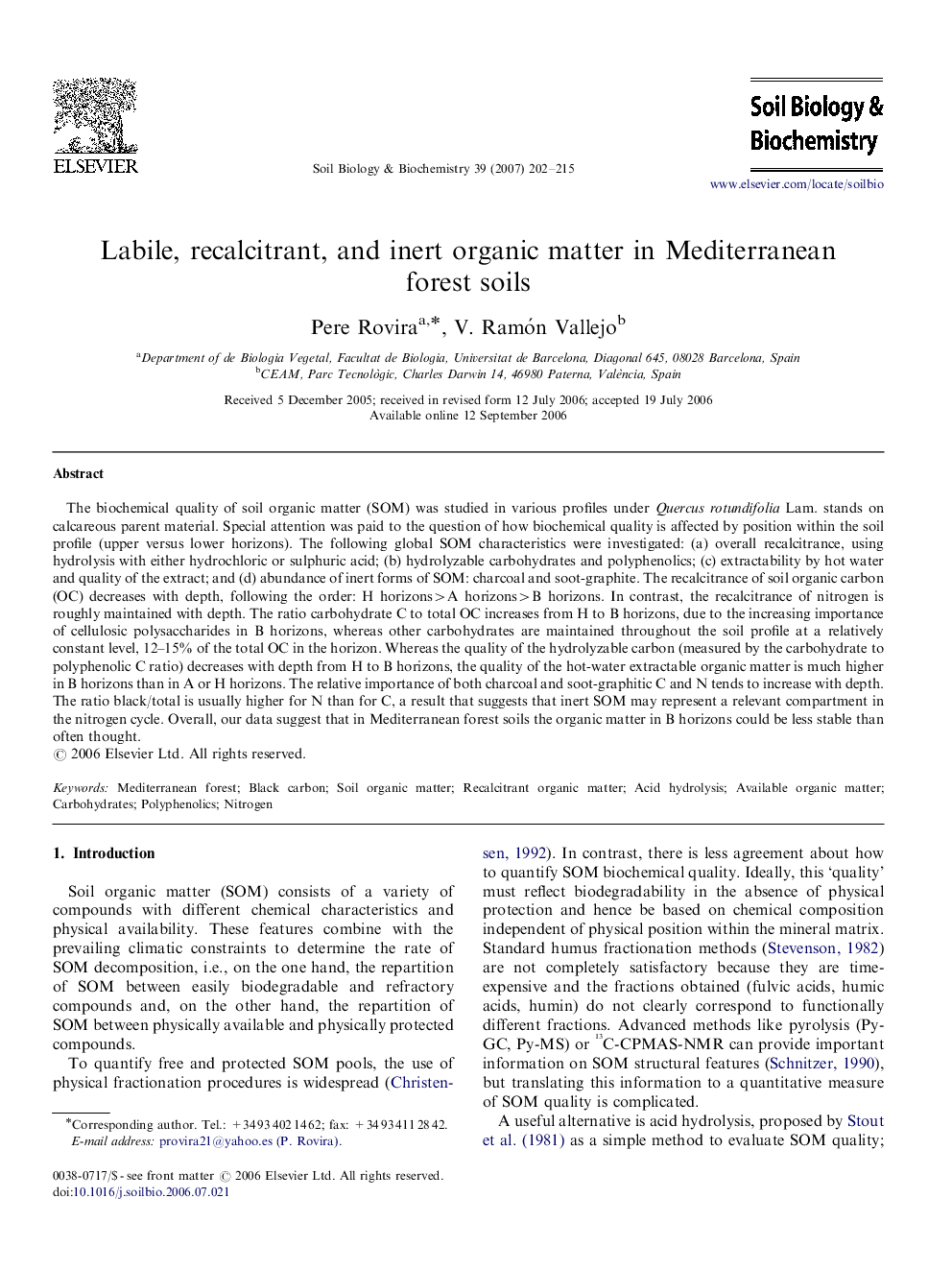| Article ID | Journal | Published Year | Pages | File Type |
|---|---|---|---|---|
| 2025880 | Soil Biology and Biochemistry | 2007 | 14 Pages |
The biochemical quality of soil organic matter (SOM) was studied in various profiles under Quercus rotundifolia Lam. stands on calcareous parent material. Special attention was paid to the question of how biochemical quality is affected by position within the soil profile (upper versus lower horizons). The following global SOM characteristics were investigated: (a) overall recalcitrance, using hydrolysis with either hydrochloric or sulphuric acid; (b) hydrolyzable carbohydrates and polyphenolics; (c) extractability by hot water and quality of the extract; and (d) abundance of inert forms of SOM: charcoal and soot-graphite. The recalcitrance of soil organic carbon (OC) decreases with depth, following the order: H horizons>A horizons>B horizons. In contrast, the recalcitrance of nitrogen is roughly maintained with depth. The ratio carbohydrate C to total OC increases from H to B horizons, due to the increasing importance of cellulosic polysaccharides in B horizons, whereas other carbohydrates are maintained throughout the soil profile at a relatively constant level, 12–15% of the total OC in the horizon. Whereas the quality of the hydrolyzable carbon (measured by the carbohydrate to polyphenolic C ratio) decreases with depth from H to B horizons, the quality of the hot-water extractable organic matter is much higher in B horizons than in A or H horizons. The relative importance of both charcoal and soot-graphitic C and N tends to increase with depth. The ratio black/total is usually higher for N than for C, a result that suggests that inert SOM may represent a relevant compartment in the nitrogen cycle. Overall, our data suggest that in Mediterranean forest soils the organic matter in B horizons could be less stable than often thought.
